Custom display boxes have emerged as one of the most effective ways to present products in retail environments. Whether at the checkout counter or a high-traffic aisle, display boxes capture shoppers’ attention, highlight key product features, and reinforce your brand’s messaging. According to Grand View Research, the global custom packaging market is valued at approximately $300 billion in 2023 and is projected to reach $400 billion by 2028. This surge reflects how brands increasingly rely on unique packaging solutions—like custom display boxes—to differentiate themselves and appeal to evolving consumer preferences.
In this guide, we’ll cover everything you need to know about custom display boxes: from their definition and benefits to design tips, material choices, and cost considerations. We’ll also explore the latest trends shaping packaging in 2025 and beyond, ensuring your displays remain relevant and competitive.
The Importance of Custom Display Boxes in Modern Packaging
Setting the Stage
In today’s hyper-competitive retail landscape, first impressions matter more than ever. Packaging is often the first touchpoint a consumer has with your brand, influencing their perception of product quality and value. Citing data from Packaging Insights, 72% of consumers say packaging design affects their view of product quality.
Custom display boxes take this concept a step further. Unlike standard shipping cartons, display boxes are designed to showcase products, making them instantly visible and accessible. Whether displayed on countertops or large-scale pallet arrangements, these boxes become marketing tools in their own right, driving impulse purchases and reinforcing brand identity.
Market Growth and E-Commerce Influence
The rise of e-commerce has fueled a 25% increase in demand for custom display boxes over the past five years, according to Statista. While online sales thrive on convenient shipping options, brick-and-mortar stores remain crucial for physical product experiences. Display boxes bridge these worlds—brands can use them not only in traditional retail but also for pop-up events, trade shows, or even as part of a curated “unboxing” experience for online customers.
What Are Custom Display Boxes? An Overview
Custom display boxes are specialized packaging solutions that aim to present products in a visually appealing, accessible format.
Unlike plain boxes intended purely for protection, display boxes frequently feature:
- Branded graphics and colors that align with your marketing campaigns.
- Cutouts, windows, or open tops for easy product viewing and access.
- Strategic shapes or compartments that hold items securely while highlighting key features.
Different from conventional packaging, custom display boxes serve dual roles: they protect products during transport and also function as in-store marketing assets. By aligning brand messaging with retail strategy, these boxes often elevate items from mere “stuff on a shelf” to eye-catching centerpieces.
Types of Custom Display Boxes: Choosing the Right Style for Your Product
The choice of display box style can significantly impact how customers perceive and interact with your product. Below are nine common types, with a summary table immediately after.
Custom Cardboard Display Boxes
Lightweight and eco-friendly, these are highly versatile. Suitable for all kinds of products—from electronics to cosmetics.
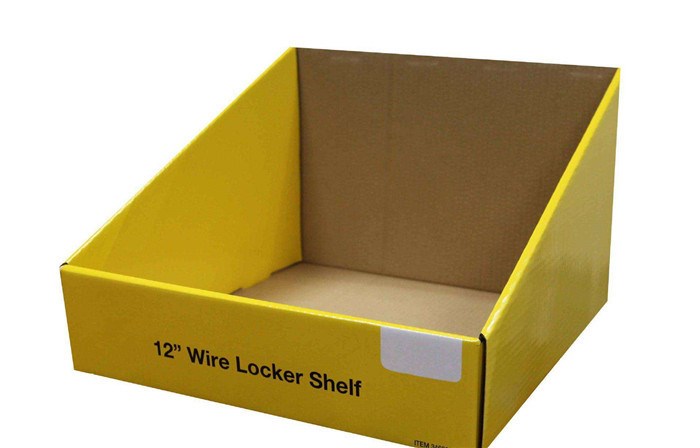
Countertop Displays
Small, portable units placed on counters or checkout zones, perfect for impulse items like candy or lip balm.
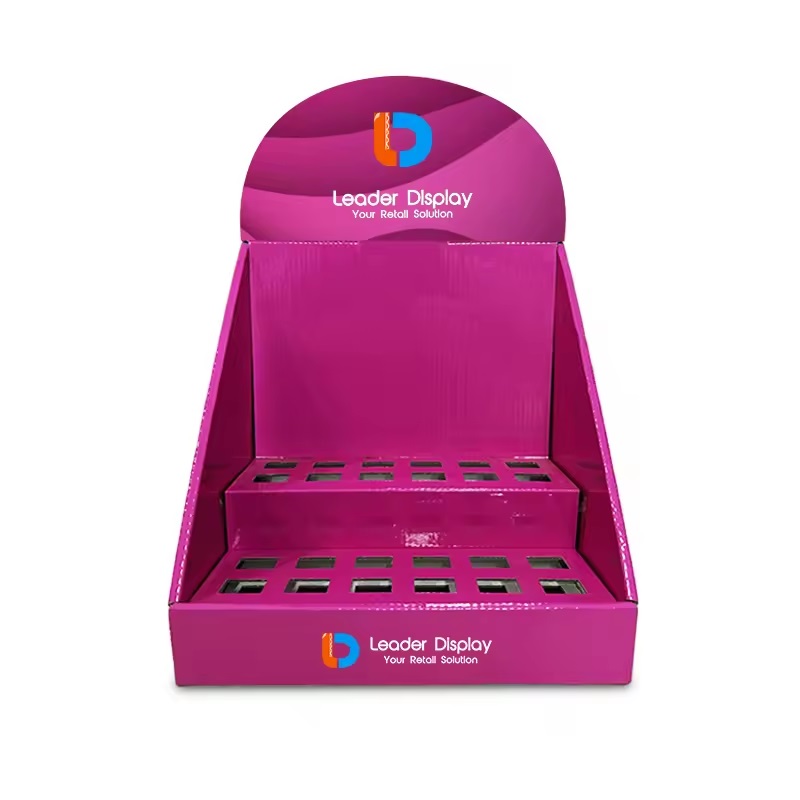
Floor Displays
Freestanding, larger structures, often used for seasonal promotions or bulk items. They catch attention from a distance and can hold multiple SKUs.
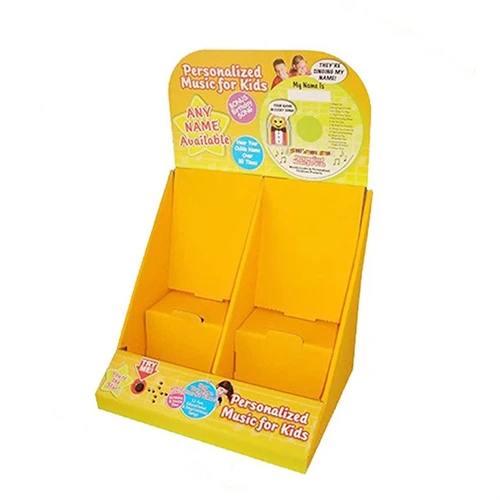
Power Wing Boxes (Sidekick Displays)
Attached to the sides of shelves, leveraging otherwise unused space. Great for cross-merchandising complementary products at eye level.
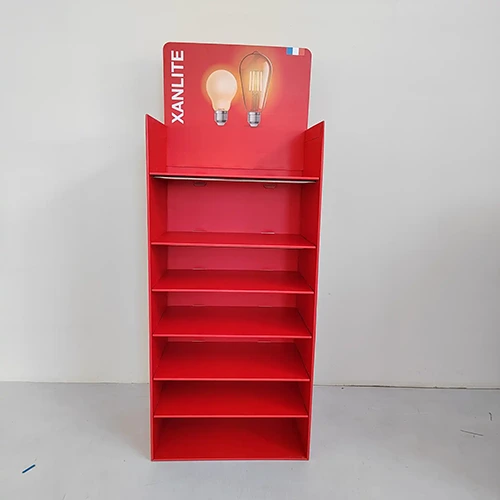
Hook Display Boxes
Incorporate hooks or hangers to suspend lightweight products, maximizing vertical merchandising areas.
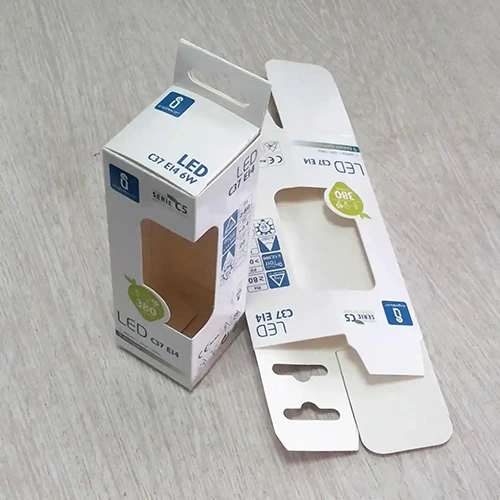
Rigid Display Trays
Durable, open-topped trays that neatly organize multiple products in a cohesive, professional presentation.
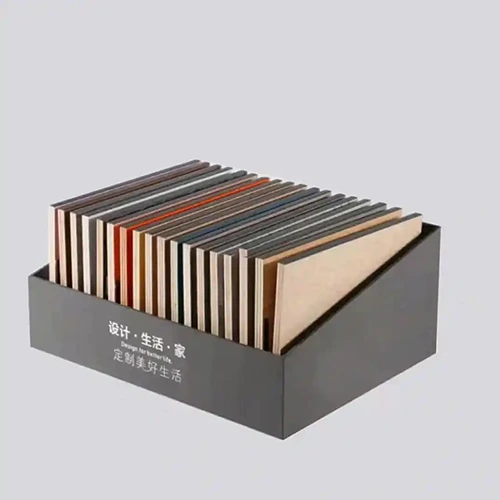
Summary Table of Display Box Types
| Type | Description | Material | Ideal For |
|---|---|---|---|
| Custom Cardboard | Versatile, eco-friendly, and cost-effective; customizable in shape and size | Cardboard, Corrugated Board | General product display (snacks, electronics, etc.) |
| Countertop | Small, portable units placed at checkout or counters, leveraging last-minute purchase decisions | Cardboard, Corrugated Board | Impulse buys (candy, cosmetics, freebies) |
| Floor | Freestanding displays that catch attention from a distance; suitable for bulk or large product lines | Corrugated Cardboard, Sturdy Paperboard | Promotions in retail environments, seasonal items |
| Power Wing (Sidekick) | Narrow, vertical displays that attach to shelf sides, maximizing underutilized space | Corrugated Cardboard | Cross-merchandising complementary products |
| Hook | Utilizes vertical real estate; keeps aisles clear while displaying items at eye level | Corrugated Cardboard, Plastic Pegs or Hooks | Lightweight hanging items (small toys, packaged snacks) |
| Rigid Display Tray | Open-topped trays with angled sides for a neat, professional grouping of related products | Rigid Cardboard, Chipboard | Sets or multiple products (cosmetics, gourmet assortments) |
Benefits of Using Custom Display Boxes for Your Brand
Increased Visibility
Display boxes place items where customers can see and handle them easily, driving impulse purchases. One study from Supply Chain Management Review found that businesses can reduce their marketing costs by up to 20% when leveraging eye-catching display solutions.
Strengthened Brand Identity
Well-designed displays feature brand colors, logos, and taglines consistently—key to making a memorable impression. A Brand Packaging Study indicates that 80% of surveyed brands believe custom displays improve customer loyalty.
Improved Organization
Whether it’s a rigid tray organizing multiple SKUs or a hook display keeping small items neatly suspended, these setups streamline the shopping experience, ultimately encouraging purchases.
Flexibility for Various Retail Formats
With multiple styles available, custom display boxes can suit everything from boutique counters to warehouse floors, ensuring a wide range of placement strategies.
Designing Effective Custom Display Boxes: Key Considerations
Align with Brand Aesthetics
Keep color schemes, typography, and visual cues uniform with your broader marketing assets. This holistic approach heightens brand recall.
Optimize Structural Integrity
The box design must withstand foot traffic, product weight, and in some cases, repeated handling. Corrugated cardboard, thicker paperboard, or reinforced materials help maintain shape and reliability.
Focus on Accessibility
Displays should make products easy to see, touch, and pick up. A well-designed cutout or tray angle ensures convenience for customers.
Placement Strategy
Plan exactly where these displays will go—on counters, at aisle ends, or near the checkout. Each location serves a different marketing function.
Materials Used in Custom Display Boxes: Balancing Cost and Quality
Cardboard and Corrugated Board
- Advantages: Lightweight, affordable, easy to print on, and eco-friendly.
- Best For: Countertop displays, small-to-medium product lines.
Paperboard and Chipboard
- Advantages: Sleeker finishes and sturdier builds for premium brands.
- Best For: Rigid trays or bath bomb displays that emphasize high-quality presentation.
Plastic Hooks or Pegs
- Advantages: Durable attachments for hanging items, optimizing vertical space.
- Best For: Hook displays featuring lightweight packaged snacks, small electronics, or accessories.
Printing Techniques for Custom Display Boxes: Enhancing Visual Appeal
Offset Printing
Offers crisp images and vibrant colors, commonly used for large-volume jobs.
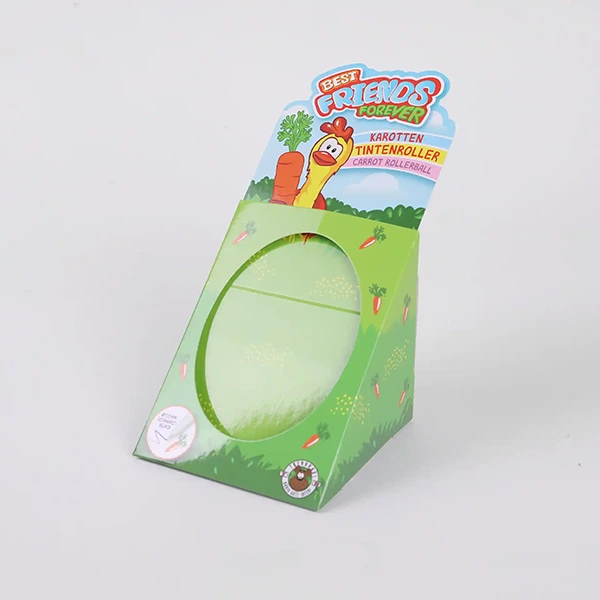
Digital Printing
Flexible for small to medium print runs with quick turnaround times. Printing Industry Report notes that 60% of packaging companies now adopt digital printing for custom display boxes due to its cost-effectiveness in low-volume orders.
Flexographic Printing
Great for printing on corrugated boards at scale; delivers solid color coverage.
Specialty Finishes
Spot UV, embossing, or foil stamping can elevate brand perception, making your packaging visually striking.
Sustainable Custom Display Boxes: Eco-Friendly Packaging Solutions
With 45% of consumers preferring environmentally friendly packaging (Eco Packaging Survey, 2023), adopting greener solutions can significantly influence sales.
- Recycled Materials: Cardboard with high recycled content and FSC-certified paperboard help brands reduce their carbon footprint.
- Soy-Based Inks: A sustainable alternative to petroleum-based inks, offering vibrant prints without high VOC emissions.
- Efficient Designs: Minimizing excess materials lowers shipping costs and environmental impact. Display boxes that are collapsible or easily recycled also resonate with eco-conscious shoppers.
Cost Factors in Custom Display Box Production
Material Choice
Paperboard, corrugated cardboard, or rigid board each have different cost implications. Higher-quality substrates may increase upfront expenses but can yield premium brand perception.
Printing Complexity
Specialty finishes, multi-color printing, and intricate graphics can add to the per-unit price. Balancing design ambitions with budget constraints is essential.
Order Volume
Larger orders often qualify for bulk discounts. Conversely, small runs allow for greater design flexibility but can cost more per box.
Logistics & Lead Times
Production and shipping timelines can impact costs—especially if expedited manufacturing is required. Plan ahead to avoid rush fees and keep the supply chain smooth.
Trends in Custom Display Box Design for 2025 and Beyond
Sustainable Packaging
Expect continued growth in eco-friendly materials, including plant-based or biodegradable substrates.
Minimalist Designs
Clean lines, subtle color schemes, and straightforward product info let the items speak for themselves.
Bold Colors & Typography
Contrasting the minimalist trend, some brands use striking hues and oversized fonts to break through visual clutter.
Interactive Elements
Hidden compartments, pull-out features, and even AR components can enhance in-store engagement.
Personalization
Limited-edition prints or region-specific designs target niche segments and foster brand loyalty.
How to Choose the Right Packaging Partner for Custom Display Boxes
Range of Capabilities
Confirm whether the supplier handles design, prototyping, and full-scale production under one roof.
Material Sourcing & Sustainability
Check for certifications (e.g., FSC, ISO) and inquire about eco-friendly material options.
Lead Times & Flexibility
Typical timelines range from 2 to 6 weeks, so choose a partner who can accommodate your schedule without sacrificing quality.
Customer Support & Expertise
Look for specialists who can guide you on structural designs, printing methods, and cost optimization strategies.
planned display boxes can elevate brand storytelling, drive impulse buys, and differentiate products in a crowded market.
Frequently Asked Questions About Custom Display Boxes
What Are Custom Display Boxes Used For?
They’re used to showcase products in a visually appealing manner, often in high-traffic retail locations.
How Do I Design a Custom Display Box?
Consider brand identity, product dimensions, desired materials, and printing/finishing options. You can work with a design team or packaging partner who offers prototyping.
What Materials Are Best for Custom Display Boxes?
Cardboard and corrugated board are cost-effective and eco-friendly. Rigid board or chipboard is suitable for premium or heavier items.
Can I Get Eco-Friendly Custom Display Boxes?
Absolutely. Many manufacturers provide recycled or FSC-certified paper materials, plus vegetable-based inks.
How Much Do Custom Display Boxes Cost?
Prices vary from $0.50 to $5 per unit, depending on materials, size, design complexity, and order volume.
What Is the Lead Time for Producing Custom Display Boxes?
Typically 2–6 weeks, influenced by design complexity, printing techniques, and material availability. Planning ahead is crucial.
Conclusion: Maximizing Brand Impact with Custom Display Boxes
Custom display boxes are no longer just an afterthought; they are vital components of a brand’s marketing strategy. By selecting the right style—be it a countertop display for impulse items or a floor display for seasonal promotions—businesses can significantly enhance product visibility and unify brand messaging in retail settings.
Looking ahead, sustainability and personalization will continue to shape consumer expectations. As eco-friendly materials gain traction and digital printing techniques allow for greater customization, brands that invest in innovative, well-designed display boxes stand to gain both revenue and reputation. In an era where 80% of brands see improved customer loyalty from packaging enhancements (Brand Packaging Study), custom display boxes deliver a tangible return on investment.
Embrace these insights, collaborate with a reliable packaging partner, and transform your retail presence with the power of custom display boxes—your brand and your bottom line will thank you.
Contact for a Free Consultation!

